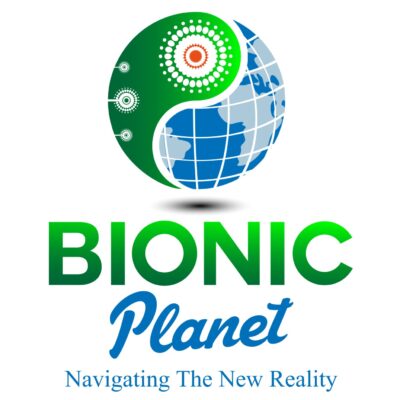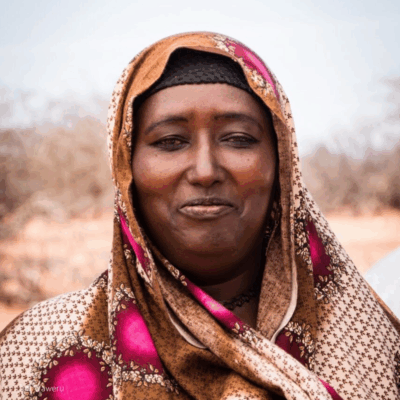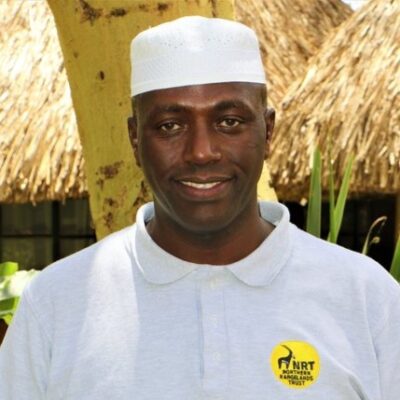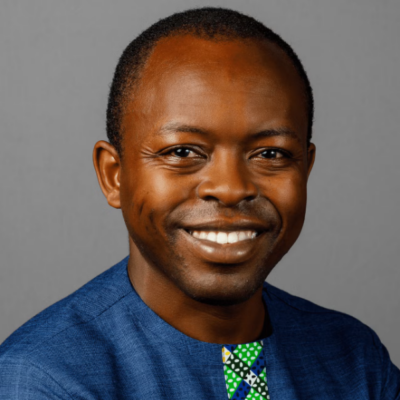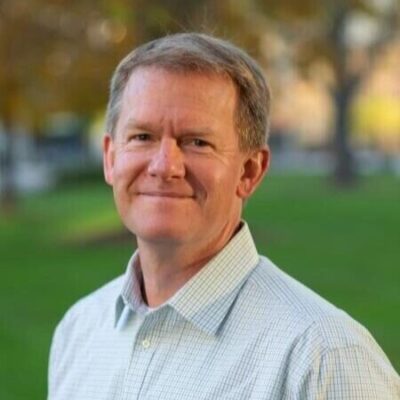Listeners:
Top listeners:
-
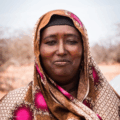 play_arrow
play_arrow
118 | Kenyan Herders Say Judgement Against Them Based on Forged Signatures / Continuation of Episode 117
-
 play_arrow
play_arrow
117 | Surviving Survival Internatinal, Part 1: Kenyan Elders Call Foul on International Media, NGOs
-
 play_arrow
play_arrow
116 | From Ticking Time Bomb to Demographic Dividend: James Mwangi and Kenya's Great Carbon Valley
-
 play_arrow
play_arrow
115 | Unpacking Donald Trump's Very Weird Environmental Orders
-
 play_arrow
play_arrow
114 | Michael Greene: Carbon Cowboy or Lone Ranger? Part 1
-
 play_arrow
play_arrow
113 | The Future of Environmental Finance: Strategies for Biodiversity and Climate Solutions, with David Hill and George Kelly
-
 play_arrow
play_arrow
112 | Fantasy Football and Dynamic Baselines: New Tools for Impact Assessment
-
 play_arrow
play_arrow
111 | The False Dichotomy Between Reductions and Removals (Rerun)
-
 play_arrow
play_arrow
110| Ecological Economics, Systems Thinking, and the Limits to Growth
-
 play_arrow
play_arrow
109 | How Brazil's Quilombola Communities are Planting the Seeds of Sustainability for Small Farms Around the World, with Vasco van Roosmalen of ReSeed
Transcript
Teaser
NARRATOR
Donuts, deodorant, buns and burgers. They’re killing us — and not just because of what they do to our bodies.
No, it’s because of what the soy, beef, and palm-oil that they’re made of — and they paper they’re packaged in — do to the environment.
More specifically, it’s because of the way way we get these commodities — by chopping or degrading forests — which is one reason that tropical forests now emit more greenhouse gasses than they absorb, according to a study published last month in the journal Science.
But what if I told you we could end this by 2020 — just two years from now?
I’m not saying we can end all deforestation by 2020, but what if I told you we can purge deforestation from these four commodities — the ones that drive most of the world’s deforestation — by ramping up ten activities that we’re already engaged in — and have been for decades: that these activities are time-tested, and they’re lined up like dominoes, ready to be activated? It’s like a giant, simmering pot ready to boil.
Would you believe me?
I hope so, because that’s exactly what I’m saying, and it’s not just me saying this. It’s more than 250 economists, ecologists, and agronomists from around the world, and they’re drawing on the experience of environmental NGOand small farming communities from Africa to Asia to Latin America — as well as the big agribusinesses — who are, quite frankly, the critical actors in all of this.
Today we’re looking at these ten activities, how they fit into 100 more that are getting a lot of attention these days — as well as where they came from, why they work, and how you can learn more about them.
NARRATOR
Earth. We broke it. We own it — and nothing is as it was. Not the trees, not the seas – not the forests, farms, or fields — and not the global economy that depends on all of these.
But we can restore it. Make it better: greener, more resilient, more sustainable.
But how? Technology? Geoengineering? Are we doomed to live on a… Bionic Planet? Or is Nature itself the answer?
That’s the question we address in every episode of Bionic Planet, a podcast of the Anthropocene — the new epoch defined by man’s impact on earth — and nowhere is that impact more deeply felt than in the forests, farms, and fields that recycle our air and provide our food.
Today we’re looking at lists: two of them, to be specific. One involves 100 solutions that can not only slow climate change, but end it and even reverse it. The other involves ten activities that can accelerate a cluster of the big 100. In between our examination of these two lists, you’re going to have to sit through a little history class — because you won’t understand where we’re at or where we’re going if you don’t understand where we came from and how we got here.
Act I
NARRATOR
I’m opening today’s show with a book review of sorts — a very short one like the ones that Sister Mary Ann used to ask us to deliver in her English class at Christ the King school in Chicago. It compares and contrasts two best-sellers related to Climate Change. One is called “Drawdown”, and it’s a recipe book of sorts… for saving the planet. I love this book. The other is called “This Changes Everything”, and it’s a mess. I hate it — even though it’s more entertaining than the first.
What I love about Drawdown, which is edited by environmentalist and entrepreneur Paul Hawken, is that it focuses on concrete, doable ways of fixing the mess.
Specifically, it summarizes 100 solutions that can not only slow climate change, but — cumulatively — end it and even reverse it. Of these 100, 80 already exist and are even being implemented, while 20 are listed as “coming attractions”.
He categorizes about a quarter of the solutions under either “food” or “land use”, and they include things like green agriculture, forest protection, and indigenous peoples’ land management — all of which I cover in this podcast
What I hate about “This Changes Everything” is that it’s shrill, sloppy, and dismissive of workable solutions. Its basic story arc is this: “Gee, I just realized this climate stuff is serious, and so I spent a year or so investigating it, and I found that all of the so-called solutions out there only fix part of the problem… none of the fix the whole thing. We need something radical! A total reset of human nature! And I’m just the person to tell you how to do it, and it involves the post office.”
On the one hand, in writing the book, Naomi Klein sounded the alarm, which is great, and she even pointed out that we need to radically alter the way we run our economy… which is true… but then she dismisses anything that isn’t a magic bullet like the ones that kills vampires… or is it warewolves? Anyway… and either way, she ends up floating a solution that’s just as imaginary as those two creatures, while not just ignoring but actively dissing and dismissing solutions like the ones that Hawken highlights in his book
Now, I get the Daniel Burnham aspect of this — he’s the Chicago architect who said, and I quote, “Make no little plans; they have no magic to stir men’s blood and probably themselves will not be realized.”
So, I can see why Klein — and, in fact, most mainstream writers — steer clear of wonky, tedious solutions. They’re boring.
But our job as reporters isn’t just to entertain. It’s to act as a kind of scout… going out into the wilderness, seeing what’s happening there — what the threats are, how to avoid them… and then reporting back in a way that clear and concise.
I’m excited about Drawdown for two reasons: first, because it achieves this, and second, because it’s become a best-seller — and it should, because these wonky, tedious solutions aren’t little. Each is massive in its own right, and Drawdown looks at 100 of them. What’s more, the book’s goal isn’t just to slow climate change, but to actually end it and reverse it. If that doesn’t stir your heart, I don’t know what will — and on that note, I’d to share with you the second half of that quote, which we almost never hear.
“Make big plans,” he says. “Aim high in hope and work, remembering that a noble, logical diagram once recorded will never die, but long after we are gone will be a living thing, asserting itself with ever-growing insistency. Remember that our sons and grandsons are going to do things that would stagger us. Let your watchword be order and your beacon beauty.”
Nothing there about being simple and pithy, and the emerging solutions to the climate challenge are not always simple, but they are noble, logical, orderly, and beautiful. The Paris Agreement, for example, is a masterwork of diplomacy — a massive mosaic of thousands of smaller agreements that respect every country and culture on the planet. Likewise, the solutions I’ll be examining today emerge from diverse sectors and societies, yet they all fit together like a jigsaw puzzle, and they’re also integral to the success of the Paris Agreement.
I’m focusing mostly on the corporate sector, because that’s where we need to focus our attention if we’re going to fix this mess.
The ten solutions we’ll be examining in the final segment come from Tropical Forest Alliance 2020.
But what is Tropical Forest Alliance 2020, and how does it influence corporate activities?
Act 2
Marco Albani
We’re basically a platform for private-public collaboration
NARRATOR
That’s Marco Albani who runs Tropical Forest Alliance 2020.
MARCO ALBANI
Created by US government and CGF
MUSIC: Zydeco
NARRATOR
We’re going to be focusing on two organizations today, and the Consumer Goods Forum is one of them. It’s a coalition of CEOs and top managers from more than 400 retailers, manufacturers, and service providers in 70 countries. It coalesced in 2009, but traces its origin to the aftermath of World War I, when French food merchants were beginning to engage in international commerce again, and needed to know that they were getting good stuff.
But they soon learned that the “war to end all wars” achieved nothing of the kind, and it wasn’t until 1953 that the International Committee of Food Chains was born.
This was a commercial enterprise focused on making sure farmers in far-away places were delivering good food to merchants and shopkeepers closer to home, but the parameters of quality control gradually expanded to include labor conditions and environmental impact.
By the 1990s, environmental pressure groups had forced the creation of certification standards for the sustainable production of palm oil and timber & pulp, while other industry groups emerged to promote general food safety.
Then, in 2009, just as climate negotiators were gathering for year-end talks in Copenhagen, Denmark, three of these industry groups — the Global Commerce Initiative, the Global CEO Forum, and the International Committee of Food Chains — merged into the Consumer Goods Forum, which is dedicated to promoting fair labor and environmental practices among companies whose sales add up to $3.5 trillion per year.
Now, I’m not so naive as to believe that these companies are all selfless and beneficent. In fact, I even think many of them are selfish and sociopathic, as legal scholar Joel Bakan maintains.
But there are ways of changing that, and these multilateral organizations are one. In fact, research from the Forest Trends Supply Change initiative shows companies that belong to organizations like the Consumer Goods Forum not only make more environmental commitments than companies that don’t, but they’re also much better at reporting progress towards delivering on those commitments, which is why this matters:
MARCO ALBANI
2010 GCF Resolution
NARRATOR
Beef, soy, palm oil, and pulp & paper. There they are again — the big four commodities responsible for most of the world’s deforestation, because farmers around the world are chopping forests to grow them. So it’s a pretty big deal when 400 companies line up behind a specific pledge to end that.
But, of course, it doesn’t end there. Just as the Kyoto Protocol showed us that government can’t do this on its own, common sense tells us that the global, profit-driven corporate sector isn’t going to fix our problems on its own, either, despite what free-market fundamentalists like to believe. We need government, we need NGOs, we need indigenous groups… we need them all working together.
So, in 2012, the Consumer Goods Forum and the US government launched the group we’re primarily focusing on today: Tropical Forest Alliance 2020 — or TFA 2020 — to get all these sectors working towards the goal of changing the way we produce the big four deforestation commodities, so that by the year 2020 we no longer chop forests to do so.
MARCO ALBANI
And since then grown… more than 400 partners… business, producers to consumers.
MUSIC: zydeco?
NARRATOR
So, you’ve got the Consumer Goods Forum representing business, and you’ve got Tropical Forest Alliance 2020 — or TFA 2020 — representing all of these diverse interests.
Then, in 2014, as climate negotiators were gearing up for the Lima talks, things get serious.
UN General Secretary Ban Ki Moon holds a massive rally in New York designed to turbocharge TFA 2020’s mission. The result is the New York Declaration on Forests, which is a pledge to cut the global rate of deforestation in half by 2020, and to end deforestation by 2030 while restoring hundreds of millions of acres of degraded land.
The pledge is endorsed by 36 national governments, 20 sub-national governments — meaning states and cities — 15 indigenous organizations, 53 environmental NGOs, and 52 multinational corporations.
The list of companies is interesting: it includes traditional good actors like Danone, Unilever, and Kellogg’s — but also companies with a reputation for doing the wrong thing, like Asia Pulp and Paper — a longtime environmental pariah once known for grinding pristine forest into pulp.
Dewi Bramono
turn story around
NARRATOR
That’s Dewi Bramono, Asia Pulp and Paper’s Director of Sustainability and Stakeholder Engagement, who we’ll hear from later in the show.
Most of the audio in today’s show comes from an event that Forest Trends hosted in September during New York Climate Week, and Dewi Bramono’s presence in that room is proof that companies can change.
The New York Declaration on Forests is a big deal, because you got all of these companies publicly committing to tackle deforestation, and the declaration isn’t just a simple statement, but is actually 10 specific goals that — like all of those 100 solutions in Drawdown — feed on and reinforce each other. The challenge is holding these companies to their word.
MUSIC: ends
Now we come to 2015: you’ve got these two global networks and this very public commitment — how do you turn this into action?
In part by getting everyone on the same page, so the governments of the UK and Norway ramped up funding for TFA 2020, and the World Economic Forum essentially adopted it — giving it a place to live in Switzerland. That same year, the organization I work for — Forest Trends — launched the Supply Change initiative — that’s Supply-Change.org — to track not just corporate commitments, but the progress that companies report, and you may have noticed I use them as a resource quite a lot.
Now we come to last year — 2016. You’ve got all of these commitments and all of this transparency, and TFA 2020 needed to pull it all together so we could see how far we were from the goal. They asked a dozen leading NGOs to help out, and they put a research-oriented group called Climate Focus in charge.
Then, at last year’s climate talks in Marrakesh, they published two reports: one focused on progress towards all ten of the goals outlined in the New York Declaration on Forests, and one focused exclusively on Goal Number Two, which says that, by 2020, we will no longer be chopping forests to produce the big four deforestation commodities.
MUSIC: End zydeco
MARCO ALBANI
Goal Two Assessment – 1
NARRATOR
Specifically, it’s a mixed bag. Using Supply Change data on almost 700 companies, they found less than half of the companies that had made commitments were actually disclosing progress — although those that did report progress were usually on track to meet their goals. They also found huge variance from company to company — meaning some great success stories, some shining examples, and a lot of lessons-learned.
MARCO ALBANI
Goal Two Assessment – 2
NARRATOR
It’s crunch-time, and we need to very quickly harvest the lessons of the last eight years to see what works and what doesn’t. Then we need to scale up what works, and do it fast.
So Tropical Forest Alliance 2020 called in “Climate Focus”. They’re the research-oriented NGO that led the creation of the two earlier assessments.
CHARLOTTE STRECK
We started with the New York Declaration
NARRATOR
That’s Charlotte Streck, who runs Climate Focus.
CHARLOTTE STRECK
Then we had a series of workshops… FADE OUT
NARRATOR
You get the picture. They didn’t just pull this out of thin air, but instead they talked to more than 250 organizations, put their findings out for review, adjusted them, and finally presented them in New York.
SOUND: fade charlotte back in
MUSIC: pensive
NARRATOR
So, let’s pause again to get our bearings.
We started with 100 activities that can reverse climate change, and we dove into one of them: ending deforestation, which we realized is part of a cluster of activities related to land-use and agriculture.
We in turn found that this cluster was broken into ten specific goals of its own, enshrined in the New York Declaration on Forests. Then we dove into one of those ten goals — Goal Number Two, the most immediate one: purging deforestation from the big four commodities by the year 2020 — and we found it’s doable.
And now, after diving down to this one goal… we’re going to open things up again… to look at the ten priority areas that can help us achieve the goal of purging deforestation from these four key commodities in just two years, which will in turn help us achieve the other 9 goals in the New York Declaration on Forests, which will in turn help us achieve a few dozen of the 100 activities that will help us reverse climate change.
MUSIC: END
NARRATOR
Before we move on, some key points. First:
Charlotte Streck
This is not a step-wise approach
NARRATOR
And also, if we do achieve the 2020 goal, the game isn’t over. ,
MARCO ALBANI
Need to keep long-term
MUSIC: ??
NARRATOR
I’m about to unveil the ten priority areas, but first I have a question for you: do you like this show?
If so, would you like more episodes — maybe better produced to boot? With a second set of ears and more time for editing?
You can make that possible by giving me a good rating on iTunes or wherever you access the show; you can tell friends about me. Or, best of all, you can become a patron at bionic-planet.com
I’ve set the patronage page up so you can support me per episode, but with a monthly cap. So, if you think $5 per month is good for a five-episode month, you can pledge $1 per episode, but with a $5 monthly cap. That way, if I don’t manage to generate five episodes in a month, you’re not paying for something you didn’t get, and if I go nuts and deliver 20 episodes one month, you won’t get whacked, either. By the same token, you can offer $5 per episode… or 10 or 50 or whatever.
I’m sitting on a ton of material — Interviews and audio I gathered as far back as June — and I’m itching to share it with you in ways that make sense. But I’ve got a day job, and I’ve got to pay the bills, too, and I’m not even close to breaking even on the podcast. I like the idea of being listener supported, but am also open to big sponsors, advertisers, or investors to cover my costs, hire some help, and scale this up. The web site, again, is bionic-planet.com, or you can e-mail me at steve@bionic-planet.com
MUSIC: end music
Act 3
SOUND: drumroll
NARRATOR
And now, the moment you’ve all been waiting for. The ten priority areas for purging deforestation from the supply chains of the big four deforestation commodities by the year 2020. Beginning with
SOUND: gong
CHARLOTTE STRECK
point 1
NARRATOR
So, what does this mean? I’ll let Michael Jenkins explain it. He runs Forest Trends, which means he signs my checks… but I think the group does good work, too, which is why I work for them.
Michael Jenkins
Forest Trends Illegality Report 1
NARRATOR
He means illegal conversion of forests to farms or fields.
MICHAEL JENKINS
Forest Trends Illegality Report 2
NARRATOR
Let that sink in for a moment. In fact, let’s hear it again.
MICHAEL JENKINS
Forest Trends Illegality Report echo
NARRATOR
So, while we do need better legal frameworks, we also need to enforce the laws already on the books — as Brazil showed when it slashed deforestation 70 percent between 2004 and 2014. If you listened to Episode 20, you heard how good-acting companies can also support enforcement — something Charlotte also alluded to.
CHARLOTTE STRECK
companies can help
NARRATOR
Companies that are good with the law can also boost their bottom line by building up trust with importers abroad — as Asia Pulp and Paper is doing in Indonesia.
DEWI BRAMONO
legality
NARRATOR
It’s the right thing to do — and it certainly can’t hurt their status with global buyers.
SOUND: drumroll
NARRATOR
And that brings us to…
SOUND: Gong
CHARLOTTE STRECK
2- palm certificatin
NARRATOR
Palm oil is in everything from donuts to soap to after-shave. You probably use it but don’t even know it.
CHARLOTTE STRECK
Palm Oil is one of the main drivers
NARRATOR
Remember we talked about certification on the start? Supply Change data shows that of the big four commodities, companies are making the most progress in reducing deforestation around two of them: palm oil and timber and pulp — mostly because we started seeing certification of these back in the 1980s. Today, about 21 percent of palm oil is certified by the Round Table on Sustainable Palm Oil, or RSPO. The challenge is twofold: getting consumers to pay a premium for this, and extending certification to more forests.
CHARLOTTE STRECK
We don’t have sufficient demand
SOUND: drumroll
NARRATOR
Then comes the next priority
SOUND: gong
CHARLOTTE STRECK
3 beef intensification
NARRATOR
“Sustainable intensification of cattle grazing”… that basically means raising more cows on the same piece of land, so that you don’t have to keep chopping forests to graze them.
CHARLOTTE STRECK
Beef is responsible for more…
NARRATOR
In episode 7 of Bionic Planet, we saw how Kenyan farmers are using agroforestry to increase milk production — they plant trees in among their crops to pull nitrogen from the air and infuse it into the soil, and they turn the leaves into silage for their cows. That’s just one solution, and there are dozens of them. Ideally, we should all eat less beef, but for now we can reduce the amount of land used to raise the ones we do have.
CHARLOTTE STRECK
we know that we can
SOUND: drumroll
SOUND: gong
NARRATOR
Which brings us to…
CHARLOTTE STRECK
4 palm and cocoa intensification
NARRATOR
Cocoa is not one of the big four, but it’s a huge contributor — and it’s mostly produced by small farmers working in cooperatives.
CHARLOTTE STRECK
More than 30 percent of palm oil and 90 percent of cocoa
NARRATOR
The report shows that small palm-oil producers can increase their productivity 85 percent without chopping more trees.
CHARLOTTE STRECK
These smallholders
NARRATOR
So, that gets us through three of the big four, plus cocoa — or cacao, as the threes themselves are called.
Ignacio Gavilan
what about soy – 1
NARRATOR
Yes — what about soy? That, by the way, is Ignacio Gavilan, Director of Sustainability, for the Consumer Goods Forum.
IGNACIO GAVILAN
what about soy – 2
SOUND: drumroll
NARRATOR
And that brings us to…
SOUND: gong
CHARLOTTE STRECK
5 sustainable soy
NARRATOR
Up until 2006, farmers across the Brazilian Amazon were chopping forest like mad to grow soy, but then something changed: Companies like McDonalds — responding to pressure from groups like Greenpeace — voluntarily stopped buying soy from Amazon farmers who chop trees to grow the stuff. The soy moratorium is just one example of a successful multilateral effort to fix the climate mess.
CHARLOTTE STRECK
it is important
NARRATOR
Certification programs are ridiculously expensive and notoriously difficult to manage — I mean, this is really complex stuff. A company like McDonalds buys beef from slaughterhouses like Marfrig or JBM, and those slaughterhouses buy from thousands of small farmers. To really do this right, we have to scale up
SOUND: drumroll
NARRATOR
And that’s where the next priority area comes in
SOUND: gong
CHARLOTTE STRECK
6 – accelerating implementation of jurisdictional
NARRATOR
“jurisdictional” means governmental — it can be federal, it can be state, it can be county, or even city. If you get an entire state like Sabah in Malaysia or California in the United States to make sure it’s farmers are producing fruits and veggies in a sustainable way, companies can buy there without spending a fortune to certify each producer individually.
CHARLOTTE STRECK
we have screened 34
NARRATOR
The state of Sabah, in Malaysia, for example, is working with several NGOs that have coalesced into an alliance called “Forever Sabah”
Cynthia Ong
jurisdictional 1
NARRATOR
That’s Cynthia Ong, who runs a group called “Land, Empowerment Animals, People” or LEAP. She’s also one of Forever Sabah’s co-executive directors.
CYNTHIA ONG
jurisdictional 2
NARRATOR
Even big companies like Asia Pulp and Paper have realized they can’t access certified material on a large scale one plantation at a time.
DEWI BRAMONO
landscape jurisdiction
NARRATOR
There are scores of efforts underway — the Rainforest Alliance is also doing great work, which you can learn about if you listen to episode 23 — that episode will have the raw audio from this event without me interjecting every few minutes. It’s kind of long, but if this episode sparked your interest, I think you’ll find the full event worth listen to.
SOUND: drumroll
NARRATOR
But for now, we move on to…
SOUND: Gong
CHARLOTTE STRECK
7 – land security and land rights
NARRATOR
This is another one we’ve addressed here before: indigenous and traditional communities tend to have a strong connection to their land. Studies have shown they usually — not always, of course, but usually — maintain their forest and want to keep it, but their legal rights to the forests are often in limbo. That leaves them vulnerable to speculators, and also less willing to invest too much in the forest
CHARLOTTE STRECK
Uncertainty of land.
NARRATOR
Another thing to remember: people in developing countries buy stuff, too
SOUND: drumroll
NARRATOR
Which brings us to:
SOUND: gong
CHARLOTTE STRECK
Goal: Mobilizing demand in emerging markets
NARRATOR
Remember earlier, when we talked about certification? We learned that 21 percent of all palm oil is certified by the Round Table on Sustainable Palm Oil, or the RSPO. One reason it’s not higher is that people still, for the most part, buy whatever is cheapest, so it’s not worthwhile for producers to spend all that money getting certified — and that’s even more so in developing countries.
Kavita Prakash-Mani of WWF is working to change that.
Kavita Prakash-Mani
21 percent
CHARLOTTE STRECK
In addition to this: domestic demand
NARRATOR
We’re getting near the end here, folks — so far, we’ve talked a lot about producers and consumers, but what about investors?
SOUND: drumroll
NARRATOR
That brings up our next priority area:
SOUND: Gong
CHARLOTTE STRECK
Redirecting Finance
NARRATOR
This is something we cover a lot on bionic planet, and it’s the core of what we cover at Ecosystem Marketplace.
Investors are still backing the bad actors, and they’ll continue to do so until they realize that environmental bad actors are also financial bad risks — but they’ll only realize that if we all hold the bad actors accountable and support the good ones.
We’ve seen some progress on this front over the past year, with HSBC manning up to some investments that led to deforestation and pulling the plug. You can learn more about that in an article I wrote for Ecosystem Marketplace called “Why HSBC’s Recent Response To Greenpeace Really Is A Very Big Deal”, and I link to that in show notes for this episode, which is episode 22 at bionic-planet.com.
We’re also seeing governments like Norway’s stepping up with finance for sustainable forest management.
Stina Reksten
private-sector-capital 1
NARRATOR
That’s Stina Reksten of Norway’s International Climate and Forest Initiative. She’s helping to launch a new fund, together with the Global Environment Facility, Unilever, and IDH — which is a Dutch sustainable trade initiative.
STINA REKSTEN
private-sector-capital 2
NARRATOR
But that’s just a sneeze in a hurricane compared to the $55 trillion global economy
CHARLOTTE STRECK
we have the finance
NARRATOR
But finance doesn’t flow with guidance
SOUND: drumroll
NARRATOR
And that brings us to…
SOUND: gong
CHARLOTTE STRECK
data
NARRATOR
This is where we come in. I already mentioned Supply Change — that’s supply-change.org — and we did another episode — episode 11 — focused on a platform called TRASE, which lets you trace soybeans from specific municipalities in Brazil to ports around the world. There are plenty of other efforts, and Nicole Pasricha of Rainforest Alliance outlined one that they’re participating in.
Nicole Pasricha
point 10
NARRATOR
That might sound boring and wonky, but the whole issue of comparability is critical — because if you can’t compare what different countries, companies, and counties are doing, you can’t reject — or reform — the bad guys and reward the good
Remember Ignacio Gavilan of the Consumer Goods Forum? He pointed out that member firms didn’t know how much soy they used. So his group created a solution
IGNACIO GAVILAN
soy ladder
NARRATOR
Ignacio Gavilan wrapping up this edition of Bionic Planet — which is a bit different than most episodes. I usually like to dive deep into an issue, but this time, we kept it pretty high-level. I hope to revisit all of these activities in more detail, and if you think that would be of value, be sure to help me out by sharing Bionic Planet with friends and giving me a good rating on iTunes, Stitcher, or wherever you access podcasts. You can also help by becoming a patron at bionic-planet.com — where you can show your appreciation for as little as $1 per month.
If today’s show sparked your curiosity, be sure to download episode 23 as well. That one will contain the full audio from the Climate Week session that I harvested for this. If you’re a paid patron, I will not be charging for episode 23, but rather just uploading that as a public service.
Until next time, I’m Steve Zwick in Rotterdam. Thanks for listening!
Episodes
117 | Surviving Survival Internatinal, Part 1: Kenyan Elders Call Foul on International Media, NGOs
April 13, 2025
116 | From Ticking Time Bomb to Demographic Dividend: James Mwangi and Kenya’s Great Carbon Valley
February 25, 2025
115 | Unpacking Donald Trump’s Very Weird Environmental Orders
January 27, 2025
114 | Michael Greene: Carbon Cowboy or Lone Ranger? Part 1
December 6, 2024

